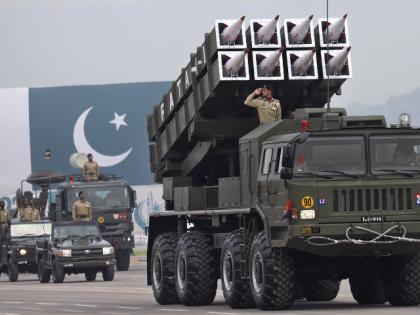Operation Sindoor: Pakistan, China Shocked as India Destroys HQ-9 Air Defence System in Lahore
By Lokmat English Desk | Updated: May 8, 2025 16:04 IST2025-05-08T15:59:58+5:302025-05-08T16:04:31+5:30
The precision strike has reportedly stunned both Islamabad and Beijing, who had touted the system as a cornerstone of regional defense. The attack exposed glaring weaknesses in Pakistan’s aerial shield and called into question the effectiveness of Chinese military technology.

Operation Sindoor: Pakistan, China Shocked as India Destroys HQ-9 Air Defence System in Lahore
In a dramatic escalation under Operation Sindoor, Indian forces successfully targeted and destroyed Pakistan’s Chinese-supplied HQ-9 air defense system stationed in Lahore. The precision strike has reportedly stunned both Islamabad and Beijing, who had touted the system as a cornerstone of regional defense. The attack exposed glaring weaknesses in Pakistan’s aerial shield and called into question the effectiveness of Chinese military technology. High-level defense officials in Pakistan are said to be scrambling for damage control, while Chinese advisors have been urgently briefed. The strike signals India’s strategic dominance and ability to breach high-value, foreign-supplied defense assets deep within enemy territory.
China’s HQ-9 System Fails to Defend Strategic Location
The HQ-9, considered China’s flagship surface-to-air missile system, was supplied to Pakistan to counter India’s growing air and missile capabilities. Deployed in key cities like Lahore, the system was expected to intercept any high-speed aerial threat. However, during India’s latest operation, the HQ-9 failed to activate in time or respond effectively to incoming threats. The radar failed to detect supersonic objects, and its slow deployment time proved fatal. For China, this failure is a reputational blow, as it raises doubts over the quality and reliability of its military exports, especially in countries that depend on them for frontline defense.
India’s Tactical Superiority on Full Display
India’s successful neutralization of the HQ-9 in Lahore reflects its growing tactical and technological superiority in the region. Armed with sophisticated missiles like BrahMos and fighter jets such as Rafale and Sukhoi, India planned and executed a high-precision strike that bypassed Pakistan’s multi-layered defenses. Experts say this operation was not just about destruction but about demonstrating dominance. The S-400 system deployed by India stands far ahead of the HQ-9 in terms of range, speed, and activation time. By defeating the HQ-9, India has sent a strong message to its adversaries: imported defenses can’t stand against indigenous precision and superior strategy.
Pakistan Left Scrambling, China Faces Embarrassment
The aftermath of the strike has left Pakistan’s defense establishment shaken, and China visibly embarrassed. Reports suggest that senior Chinese military officials are seeking explanations for the HQ-9’s failure, as Pakistan scrambles to resecure air defense in key locations. This development has also triggered internal criticism in Pakistan over its overreliance on Chinese systems without independent validation. Defense analysts warn that this incident could reshape Pakistan’s procurement policies. Meanwhile, India has emerged more confident and assertive, having proved it can surgically target even the most protected enemy assets. The geopolitical consequences of this strike are likely to reverberate far beyond South Asia.